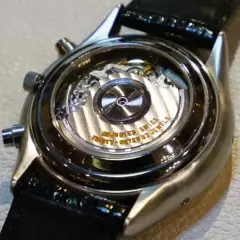How to open caseback which does not have grooves or slots
-
Recently Browsing
- No registered users viewing this page.
-
Topics
-
Posts
-
By Neverenoughwatches · Posted
I'll go halves with them John , we can share it 😉 -
By Neverenoughwatches · Posted
Besides locktite Nev, is there anything random that you use to fix in the pivot ? -
By Terrinecold · Posted
Thanks Hector, I do think though that the problem I am experiencing is specific to Miyota movement in general and the 6T series in particular. When you describe putting the bridge you are talking about the train wheels. The problem here is that under that same bridge you have the 4 train wheel, the barrel, 2 extra winding related wheels and the center sweep pinion. I can mostly put them in their holes but 2 of those (the 4th wheel and the second pinion are completely under the plate so I can't nudge them in the right position. I managed it with a larger Miyota 8200 series but with the smaller 6T15 it is even worse. Anyway, I'll retry tomorrow evening or this week end. This evening is going another rock climbing day (going from very light pressure on tweezers to much more force going through the fingers, although in climbing we also want to use the absolute minimum grip which won't make us fall to save the muscle and be able to climb longer routes). to add insults to injury, if you read this thread from the start, I initially messed up the disassembly as I couldn't detach the rotor. I normally (and I think I did this time too) put all my parts in their individual compartments in the part tray and I am doing my best to be very careful about them. But in the week and a half it took to figure out how to detach the rotor I somehow lost the screws from the bridge. I have a few others which will be needed later. I know they are reference 922-600 but I couldn't find what it means in general term so I don't know if I can buy replacements or an assortment of screws and replace those 2 by others. -
By Neverenoughwatches · Posted
Something that can happen with a lyre spring, the back of the arms can bind against the shoulders of the chaton cut out where the spring is fixed in when the spring is lifted out of the way. To stop the spring bending or breaking it needs pulling forward slightly before lifting so it clears the edge of the chaton. -
By nevenbekriev · Posted
One way is to file it by hand. Good file with sharp edge is needed. Another way is with the aid of milling attachment. There is one more way, thyat is really only on the lathe, but the arbor has to be attached perpendicular to the axis of the spindle. Will be easier to show pictures than to explain this. I must say 'Good night' as my wife is now awake and is roaring when I get closer to the computer...
-






Recommended Posts